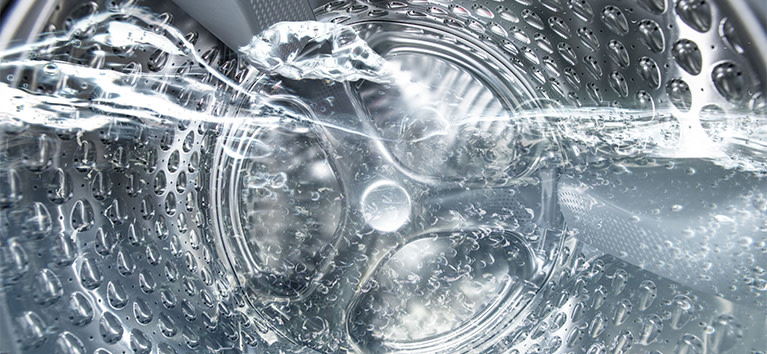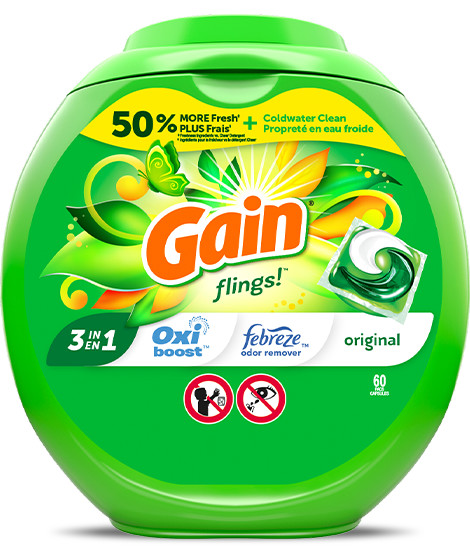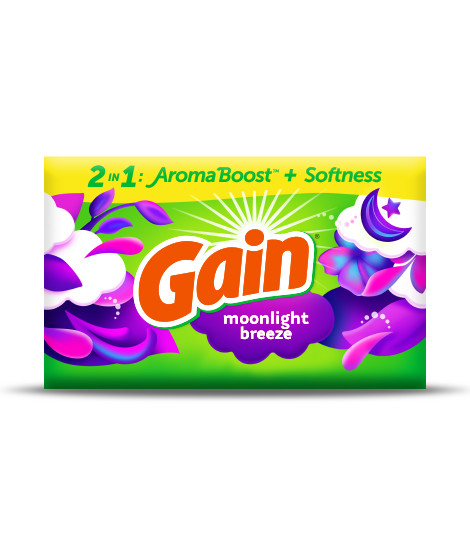For those of us who have been “adulting” for a while now, we may think we know all there is to know about how to do laundry. We’re experts in sorting, masters of the machine wash cycle, and fabulous folders of all types of fabrics. But what many of us overlook is the cleanliness of our washing machines. When was the last time you cleaned your washing machine?
Although it makes sense to most of us that since the washing machine removes dirt, it may need to have dirt removed as well from time to time, rarely do we have a routine for how to clean your washing machine. Dirty washing machines are the result of buildup of leftover detergent, dirt, mineral deposits from water, grime, and even mold. A dirty machine can cause a number of problems, not the least of which is the transfer of lingering dirt onto clean clothes or infusing your clean laundry with musty, mildew odors.
In this guide, we’ll take a look at how to clean a washing machine as well as how often you should clean your washer to keep clothes smelling fresh and looking good.
How Often to Clean a Washing Machine
How often you’ll need to clean your washing machine will depend on the type of machine you have as well as how often you’re doing laundry. Most machines have a “clean” cycle that can be run without a load in it to flush the drum and internal components of excess dirt, bacteria, or any other buildup of contaminants that can lead to dirty or smelly laundry as you run repeated wash cycles through the machine.
Generally speaking, your washer should be cleaned twice a year, but this interval will vary. Take note that the type of washer you have (front or top load) will make a difference in terms of your cleaning intervals and steps you’ll need to take in order to clean the machine. Front load washers typically come fitted with a rubber seal that, if not cleaned regularly, will collect mold and mildew after just a few wash cycles.
Additionally, high efficiency (HE) and front-load washer tend to use far less water than a standard machine, which actually means they need cleaning more often, usually once a month. If you’re a person who experiences heavily-soiled loads or you live in hot, damp climates where mold and mildew are more of a problem, then you’ll want to clean more often.
For specific cleaning instructions on your particular make and model of washer, consult your owner’s manual. If you can’t find your manual, try searching your specific make and model number online as most manufacturers post digital versions of their owner’s manuals online.
Materials to clean Washing Machine
Before you set out to clean your machine washer, you should take some time to gather a few essential items that make cleaning out the gunk and mold inside much easier and more thorough. You will need:
Chlorine bleach
Distilled white vinegar
Measuring cup
Soft cloth
How to Clean a Top-Loading Washing Machine
Your top-loading washer should be cleaned at least twice a year and before you start, make sure there is no laundry inside the drum, no fabric softeners or detergents in any of the trays. You’ll need to have a completely empty washing machine before you begin cleaning.
Step 1
Add Chlorine Bleach to Dispensers
Fill both the detergent dispenser drawer and the bleach dispenser compartment with a half cup of liquid chlorine bleach, filling both compartments to their highest level.
Step 2
ADD CHLORINE BLEACH
After the drum has finished filling with hot water but before the agitation part of the wash cycle begins, open the door and add one quart of chlorine bleach to the drum.
Step 3
ALLOW THE CYCLE TO COMPLETE
After adding the bleach, allow the rinse and spin cycles to complete and the washing machine to drain.
Step 4
FILL WASHER WITH HOT WATER
Select the longest, hottest wash cycle setting on your machine and start it, allowing the drum to completely fill with hot water a second time. Be sure you have no clothing items in the drum and no detergent or fabric softeners in any trays.
Step 5
ADD DISTILLED WHITE VINEGAR
After the drum has completely filled with hot water and before the agitation begins, open the washer door and pour one quart of distilled white vinegar into the drum.
Step 6
ALLOW THE CYCLE TO COMPLETE
After adding the distilled white vinegar, allow the rinse and spin portion of the cycle to complete and the washer to drain completely. Once finished, your washer has been cleaned and is ready to wash your next load of dirty laundry.
How to Clean a Front-Loading Washing Machine
Front-load washing machines may be convenient, allowing users to load dirty laundry from a lower position than top-load machines, but they come with their own set of unique challenges and maintenance requirements. Since they spin with the drum opening facing horizontally, they need special seals and fittings to help keep water from leaking down the front of the machine while it agitates and spins.
Thanks to their unique seals, front-load washers have plenty of dark crevices and areas which hold moisture after wash cycles complete, allowing bacteria, dirt, and mold to hide. Front-load machines often need more regular cleaning than their top-load counterparts.
Hint: In order to help keep mold, mildew, and other odors from taking hold in your front-load machine, try keeping the front door slightly ajar when not in use. This will help additional moisture inside the machine to air dry and should help keep mold behind the rubber door seal at a minimum.
Step 1
ADD CHLORINE BLEACH TO DISPENSERS
Fill both the detergent dispenser drawer and the bleach dispenser compartment with a half cup of liquid chlorine bleach, filling both compartments to their highest level.
Step 2
RUN A NORMAL CYCLE
Ensure there are no dirty clothes in your machine and it has an empty drum. Next, select a normal cycle with warm water and let it run completely through, start to finish.
Step 3
WIPE DOWN DOOR SEALS
Once the cycle completes, using your soft cloth, dry completely around the door opening. Next, dry and inspect the flexible seal gasket on the machine, ensuring any bits or remnants of mold are removed completely.
Step 4
WASH CLOTHES
Run a load of clothes through your washer, inspecting afterward to insure their cleanliness meets your standards. If odors persist, try repeating steps 1 and 2 using distilled white vinegar.
How to Clean Washer Dispensers
The built-in dispensers for detergent, fabric softeners, and other laundry aids sometimes need to be cleaned as well. The buildup of old residues can leave spots on clothing and also cause clogging, which affects how the machine automatically dispenses the products you put in your trays. For best laundry results, it’s always a good idea to take out removable components and clean them regularly.
Step 1
EMPTY THE WASHER
You should have an empty washing machine drum before you start cleaning any of its components. No soiled fabrics of any kind should be in the machine while you’re cleaning it.
Step 2
HEAT DISTILLED WHITE VINEGAR
In a microwave or small sauce pan, gently heat distilled white vinegar or hydrogen peroxide, but make sure it’s not boiling hot. It just needs to be warm enough to soften tough dirt.
Step 3
CLEAN DISPENSER
Pour heated cleaner into the dispensers, allowing the warm vinegar or hydrogen peroxide to sit and loosen buildup of detergents and other laundry aids.
Step 4
RUN WASH CYCLE
Using a normal, warm water cycle, run the machine and allow it to complete the rinse and spin cycles. As it runs, the warm vinegar or hydrogen peroxide will be dispersed through the machine, loosening any additional buildup before being drained away.
Step 5
CLEAN REMOVABLE DISPENSERS
Take any removeable dispensers out of the machine and submerge them in warm vinegar to loosen up any excess buildup. You can clean with a small, soft brush or cloth. Rinse with clear water and put them back in your machine once finished.
Frequently Asked Questions
What is the best way to clean the washing machine?
One of the best ways to clean the washing machine is using chlorine bleach and distilled white vinegar. Starting the washer on its hottest cycle, allow the drum to fill with water, then add one quart of chlorine bleach to the water before allowing the cycle to complete. Repeat the process once the cycle has finished, adding a quart of distilled white vinegar to the washer drum before letting its second cycle complete.
Is bleach or vinegar better to clean the washing machine?
While the results will be similar for both, using the distilled white vinegar to clean the washing machine is the more environmentally friendly option while also being decidedly cheaper. Be careful to never mix your bleach and vinegar as this could lead to the release of chlorine gas.
How do I clean a smelly washing machine?
To fight odors in your washing machine, mix a quarter cup of baking soda with a quarter cup of water, then add it to your machine’s detergent container. Next use 2-4 cups of white vinegar, adding it directly to the drum before running a hot temperature cycle.
What can I put inside my washing machine to clean it?
Start a hot wash cycle and allow the drum to fill completely with water. Once full, add a quart of chlorine bleach to the machine and allow the cycle to complete. Run a second cycle through the machine, adding a quart of distilled white vinegar to the drum after it’s filled with hot water. Allow the cycle to complete and drain, then you’ll be ready to wash your next load of clothes.
It’s important to keep your laundry products up, closed and safe – away from children. If at any time you have difficulty closing your package, please reach out directly to our team.
RELATED ARTICLES
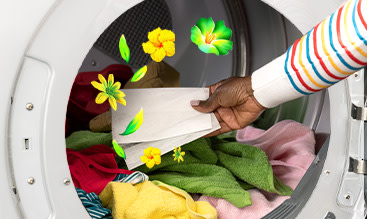
HOW TO USE DRYER SHEETS
Are you so obsessed with the scent of Gain that it feels like you can never get enough of it?
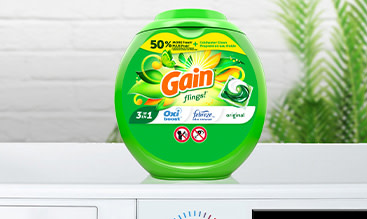
LAUNDRY SAFETY TIPS
On the surface, doing laundry may seem like one of the least dangerous tasks we perform at our house.
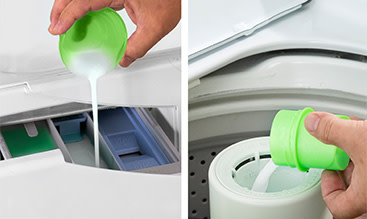
HOW TO USE FABRIC SOFTENER
Having softer clothes and incredible-smelling laundry may seem unnecessary for some people.

